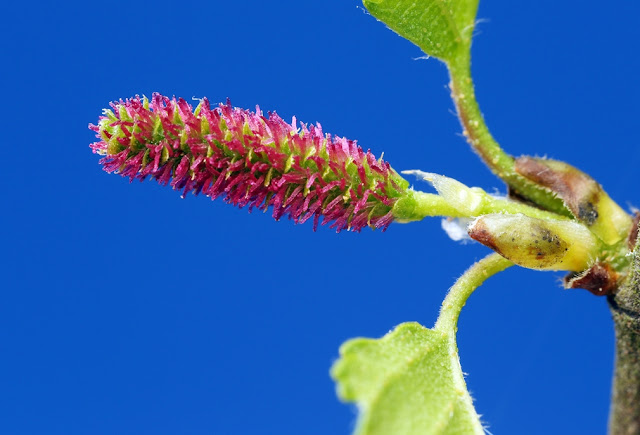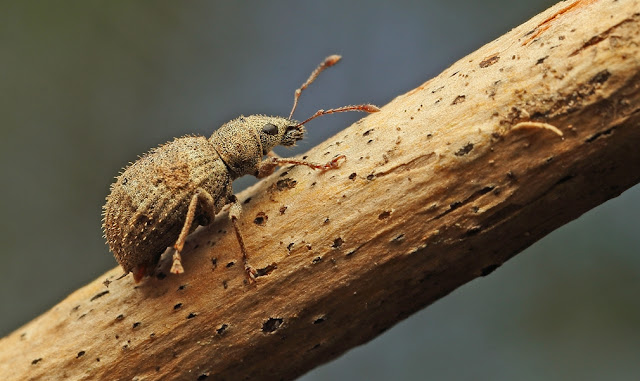Yes spring has sprung and this year more than any we need to appreciate and celebrate it. With that in mind, I have just one word to share...Geosmin!
Bear with, bear with, this is going to get interesting...
An article published 6th April this year entitled:
'Research unearths the science behind the smell of spring'
stated this; 'You may not have heard of geosmin, but wherever you may be on this planet, it's likely that you could recognise its smell.'
The secret, according to the study published in Nature Microbiology, lies in an ancestral mutual relationship between the soil bacteria Streptomyces and primitive, six-legged creatures called springtails (Collembola).
Scientists suspected some kind of animal or insect might help distribute the Streptomyces spores. And so to cut a long story short, they conducted a series of experiments which proved the theory.
The studies found that geosmin chemical signals guide springtails to Streptomyces as a privileged food source. In return, springtails help disperse Streptomyces spores in two ways: by defecation and by distribution of spores that stick to their bodies.
So next time you walk in the woods or dig your garden and notice the smell of spring, spare a thought for the springtails and Streptomyces toiling in the soil below; an example of chemical communication that’s endured for 450 million years.
(Not sure if this works or not; it's just one of those 'sound and vision' phone photos that I thought I would try)
Well that was one of three discoveries I have made over the past few days.
The second one was that springtails sometimes live inside ants nests. It wasn't until I moved a plant pot in the garden and spotted some tiny white moving dots amongst the ants beneath, that I discovered a new species to me.
Yes, this is 'Cyphoderus albinus' a minute species of springtail that lives with ants. Thought to be fairly frequent here in the UK, but under-recorded. I could only find one record from my part of the world and that was down in Sedlescombe Sussex.
 |
| Cyphoderus albinus - A Springtail (Collembola) |
This was the third discovery:
And just what was this third discovery JJ? Well, I had not realised that silver birch trees have both male and female flowers. Male flowers are long and drooping, whilst female are shorter and erect (stop it!).
It was the beautiful purple stigmas that attracted me; something I had not previously noticed.
What else is to be celebrated in spring? Well procreation is. Procreation is the most basic and important function. Without it nature is good for one generation only. Everywhere you look in springtime the insects and bugs seem to be only too aware of this fact and appear to split their time equally between eating and making more insects and bugs (in fact at times, doing both)...
 |
| I think these might be Flesh flies? |
 |
| Propylea quatourdecimpunctata - 14-spot Ladybirds |
What a name eh! I think quatourdecim means 14 and punctata for 'spotted'. Much easier to stick to the shortened version of 'P14'.
I've been seeing a number of ladybird species lately...
 |
| The orange ladybird - Halyzia sedecimguttata |
 |
| The orange ladybird - Halyzia sedecimguttata |
 |
| A 22-spot Ladybird - Psyllobora vigintiduopunctata |
 |
| A 22-spot Ladybird - Psyllobora vigintiduopunctata |
Whilst we are talking about overly complicated scientific names, I apologise once again if any of these written here are not current: the powers that be are always changing established names and I don't seem to have either the time, or the inclination to keep up to date (although I daresay I will eventually).
Staying with beetles for a moment (because of course ladybirds are just colourful beetles) I have spotted my first one of these for 2020...
 |
| A Hazel Leaf-rolling Weevil - Apoderus coryli |
I find these weevils every year, and weevils of course are also beetles. I found this one on the 8th of February, making it my earliest find by 2 days. Judging by the amount of debris it's carrying around, I would hazard a guess that it had only just emerged.









3 comments:
Cracking!! A lovely lot of ladybirds! :-)
Mx
Oh! Nearly forgot! Think your weevil might be Strophosoma melanogrammum...
Mx
Hi again Maria,
Pleased you like the ladybirds ;-) Erm, I have to say that I discounted the ID you are suggesting because (and I know you cannot tell from the angle of this photo) the dark stripe close to the pronotum seemed to be almost totally absent. However, I trust you implicitly and have no doubt it IS as you suggest. Thanks x
Post a Comment